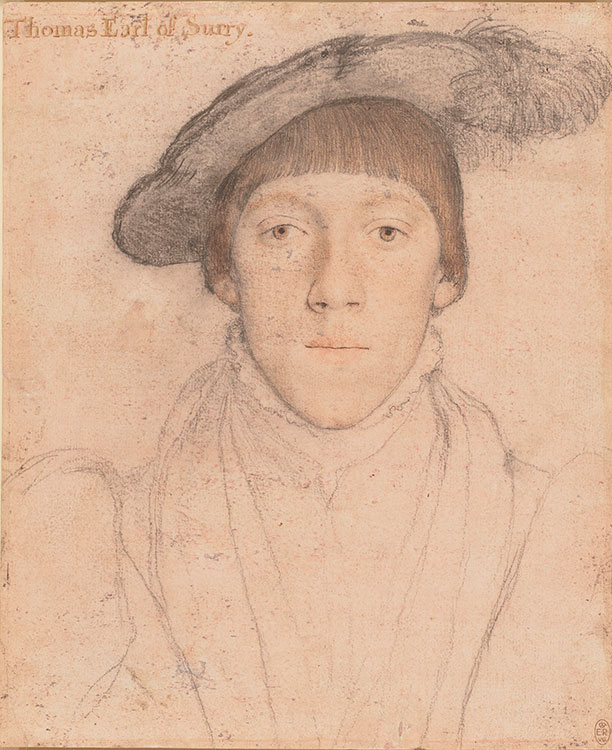
Henry Howard (1516/17–1547)—a poet, soldier, and protégé of Thomas Wyatt—was still a teenager when he posed for this forthright yet delicate portrait. Holbein paid close attention to the almost imperceptible irregularities of the young man’s features, such as the slightly different shapes of Howard’s brown eyes and eyelids. The artist shaded the right side of the sitter’s face with a combination of black and red chalks, which he carefully blended by rubbing or stumping to produce a sculptural effect.
Hans Holbein the Younger (1497/98–1543)
Henry Howard, Earl of Surrey, 1532–33
Black and colored chalks, and pen and black ink on pink prepared paper
Lent by Her Majesty Queen Elizabeth II; RCIN 912215
This study of Henry Howard, Earl of Surrey, is one of Holbein’s most subtle drawings. Using black chalk, the artist skillfully established the oval of the head and added subtle shading along its inner outline. Within this vertically elongated form, a thin, delicately varied pen and ink line separates the young man’s lips. Holbein carefully observed—or perhaps even enhanced—the natural asymmetry of the sitter’s features. If you look closely, you will notice clear discrepancies of size and placement in the rendering of Howard’s eyes, eyebrows, nostrils, and even ears.
Howard, who sat for this portrait in his late teens, was the first cousin of Anne Boleyn and a close childhood friend of Henry FitzRoy, the illegitimate son of Henry VIII. His most enduring contributions, however, were in the field of poetry. In addition to writing sonnets, Howard was the first English writer to publish blank verse as part of his translation of Virgil’s Aeneid.
Royal Collection Trust / © Her Majesty Queen Elizabeth II 2022
